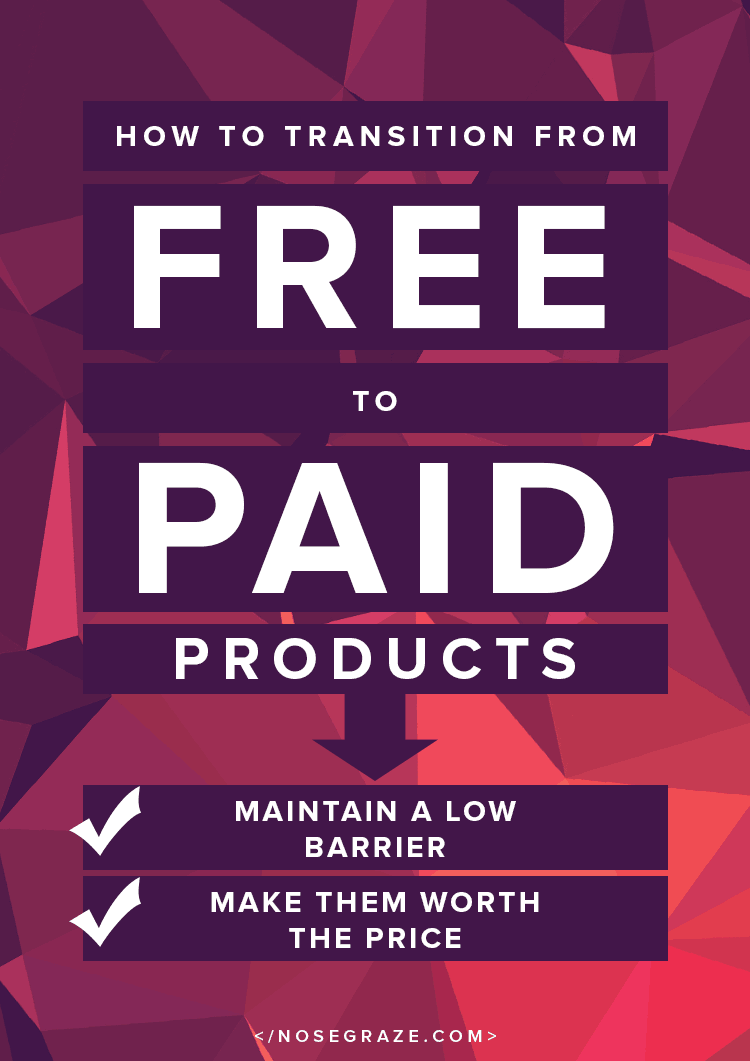
Hi! I’m interested in starting making pre-made Blogger themes. I can code with HTML, CSS and Javascript and have coded websites for myself and family businesses. Eventually I’d love to start up a business doing this and charging for custom designs – though I’m not that confident yet. I feel I would be better simply making themes and uploading them to my blog where they can be downloaded for free, due to my relative lack of experience and young age (teen). However, I worry that if I do this, it will be harder to introduce a small fee later. Which would be best? Thankyou!
Anonymous
Hi there! I think you’re on a really exciting track here. Starting out with free themes is a great idea if you’re not yet confident in your abilities.
Starting out free helps you get the experience you need
If you’re not yet confident in your skills, charging for your work straight away isn’t a great idea. If you don’t feel like you’re delivering a quality product, then you shouldn’t charge people for it.
If you start out making free themes, you’re giving yourself the opportunity to practice and hone your skills. With each theme you make, you’ll get better and better. It’s very easy to see yourself improve!
Have you perfected your technique? It’s time to start charging!
You just need to figure out the difference between your old free themes and your new paid ones.
Here’s how you can make a distinction between free and paid products:
Free
- Inexperience—maybe messier or less professional code
- May not be perfect
- May not be super complex
- Doesn’t have as many features or integrations (example: not responsive)
- No support/help
Paid
- Better/cleaner code that comes from more experience
- More interesting, dynamic, professional layouts/designs
- Has all the bells and whistles (responsive)
- You offer help/support/instructions with the purchase
You don’t have to check all the boxes—those are just some examples to get you started.
I think the #1 thing you need when you start charging is the ability to say that you’re confident in your product. You know your code is good, clean, and worth paying for. That in itself is enough of a reason to start charging for it. You can even be that open and up front about it when you tell your customers about your new paid themes later. You can say something like:
I’ve been releasing free themes over the past few months has a way of honing my skills. I’m super happy with the response I’ve gotten with these themes and I’ve learned more and more with each one I’ve created. I can look back and clearly see how much I’ve grown as a designer and developer.
I’m going to start using my skills to deliver higher quality, more professional paid themes. These themes will have a cleaner code base and some documentation on how to use them. My free themes will still be available to anyone who wants to use them, but I’m very happy to be able to offer higher quality themes that I can spend more time developing, updating, and supporting.
You don’t need to justify the change
You don’t even need to try to justify releasing premium themes instead of free ones. The only important factor is that your premium themes are in fact better than your free ones. Otherwise, why should people buy them over getting the free one? That’s why a premium theme typically has more features or promises than a free one.
You don’t need to explain WHY you’re switching from free to paid. You just need to convince people that the paid ones are worth it.
But keep your free themes too!
One of the best things you can do is have a low barrier of entry. That means free!
The idea is that someone will come along, it will be super easy for them to try one of your products (because it’s free!) then if they love that, they may turn their eye towards the “better” paid themes.
Free products like this ultimately convert into more paid customers down the road. That’s why the “freemium” model works so well. In WordPress, it typically works like this:
- Release a free plugin in the WordPress.org repository.
- Have optional paid add-ons for the product.
So ANYONE can take the free plugin for a spin. This will easily create thousands of users. Some of those will want more functionality and will look towards the paid upgrades. The point is that the low barrier to entry makes it very easy to get customers in the door. Then you just have to convert those into paid customers via add-ons.
It’s a different model than what you’re considering with your free/paid themes, but the low barrier to entry is the same idea. Keep your free products around to get more customers in the door. Then your later goal can be to convert those customers into paid ones.

Well i just love your themes..so classy and gorgeous and easy to use. If I was still on blogger I would totally pay to have a theme, I feel its worth it.
Thank you very much!
Hi Ashley, Freemium business model works great for online based services as well as products. It can be a theme, plugin, tool – the freemium model fits perfect. The most important factor is, do the right product reaches the right audience? if that happens then everything goes great. I am also following this model for my WordPress plugin product.
Thanks.
That’s great! You’re right—the freemium model is wonderful if you can get the perfect audience. Some of the most successful WordPress products/companies use this model.
Thought your advice was ‘right on’! I admire the questioner — being a teen and already wanting to start out on this adventure. I think he or she has a great future ahead if they keep applying themselves.
@dino0726 from
FictionZeal – Impartial, Straighforward Fiction Book Reviews
Yes it’s fantastic, isn’t it? I love it when people have big dreams and make steps to achieve them, even at a younger age.